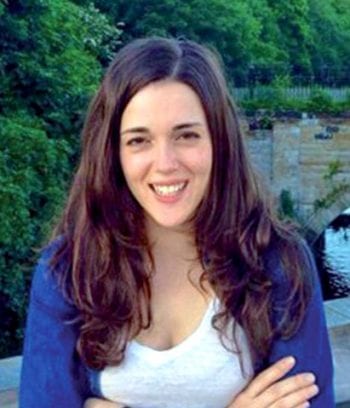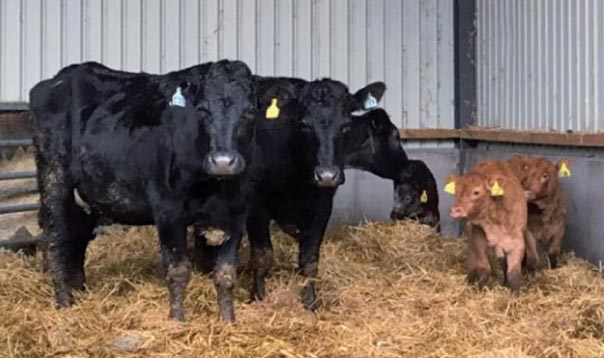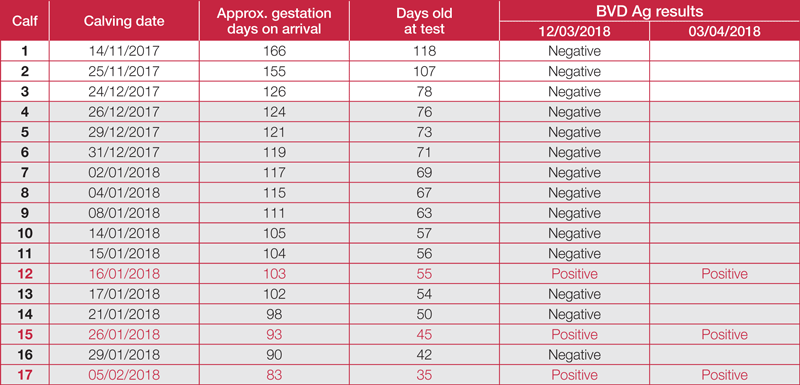23 Apr 2019
CASE STUDY: After a two-year effort to control BVD in 2012 and remaining accredited free for four years in a row, a farm in the North East of England became re-infected in 2017 by buying-in pregnant heifers.

The 2018 BVDzero award-winning case study was by Anna Bruguera Sala.
The winning entry in the 2018 BVDzero award was submitted by vet Anna Bruguera Sala from Alnorthumbria Vet Group, Rothbury. The entry was one of 30 from all over Europe in the biennial competition.
Anna’s case study examined the risk of buying pregnant cattle, and focussed on a farm that was accredited BVD free for four years from 2012 to 2016. In 2017 it was re-infected following the purchase of some pregnant heifers, which gave birth to PI calves.

The case study detailed the background to the farm, the problems which arose and the timings of those problems, and the investigations undertaken to establish what was causing them.
The farm runs a beef herd and a sheep flock, with approximately:
The farm is divided into three units: the bottom and top yards that are separated by a road, and a third new shed located a mile away from the other two yards. Additionally, there are three hill farms where cows are sent to graze after they have been scanned and confirmed in-calf.
The farm runs a spring and an autumn calving herd, with 12-week calving periods that usually extend from February to April and August to November. Spring calving takes place at the main farm, while the autumn cows mainly calve at the hill farms.
Bulls, replacement heifers and fattening cattle are brought on to the farm every year, mostly sourced through the market but also some private sales. On arrival, all stock is tested for BVD antigen and bulls are sourced from BVD-free accredited breeders. Historically, homebred replacement heifers were given an inactivated BVD vaccine and the farm is a member of BVDFree England.
There are four neighbouring farms, all with cattle and some cattle contact is always possible, as with most hill farm-type situations.
Although vaccination had been used for 10 years, the farmer acknowledged that vaccination timings may not always have been correctly adhered to, and investigations into a pneumonia outbreak in 2011 confirmed the presence of BVD.
After blood testing all adult cattle and antigen tag testing all calves, two PI cows were found and culled, while all calves tested negative. Regular testing in 2014 confirmed the herd was still free of BVD and twice yearly antibody checktests were then performed.
Upon arrival, they were isolated and antigen tested; all were negative and a two-shot BVD vaccine primary course was started, although, again, the herdsman later conceded second dose timings often extended beyond the four week period as specified by the datasheet. Furthermore, when isolated, the group of cattle did come into contact with other cattle belonging to a neighbour and a BVD outbreak was diagnosed in early 2018.

When entering the “isolation” field, many of the heifers were between 88 and 124 days pregnant and would, therefore, be at risk of producing a PI calf.
In early 2018, vets made multiple visits to the farm for cases of calf pneumonia. The severity of the clinical signs in this group of young calves raised the suspicion there might have been BVD virus among them.
In March 2018, when the youngest bought-in calf reached four weeks of age, all 17 calves were blood sampled and tested for BVD antigen. Three calves tested positive and the positive calves and their dams were isolated immediately in a separate, empty shed a mile away from the rest of the stock.
The calves were tested again 21 days later and this second positive result confirmed their PI status. The dams were not tested again as they were antigen negative on arrival and it was assumed that the PI calves would have been the result of a transient infection (TI).

Since autumn 2018, all calves are now tag tested at birth and, if any positive animals are found, they are isolated and re-tested 21 days later and culled if confirmed to be a PI.
Older calves were antibody screened with check tests and the herd has moved to the Bovela® vaccine, which is easier to incorporate into the herd’s management with its one-shot primary course.
In addition, biosecurity has been improved and no more pregnant animals are brought on to the farm; all bought in stock is also effectively isolated.
The case highlights the importance of effective biosecurity, supported with sensible management and buying practice – i.e. not buying stock of unknown BVD status.
The impact on the herd, in terms of calf pneumonia and also a cryptosporidiosis outbreak that was more severe than might be expected, most likely due to the immunosuppressive effect of transient BVD infection, was significant.
From now on, tight biosecurity, screening and vaccine protocol compliance will be implemented.

Bovela lyophilisate and solvent for suspension for injection for cattle contains modified live BVDV-1, non-cytopathic parent strain KE-9: 104.0–106.0 TCID50, Modified live BVDV-2, non-cytopathic parent strain NY-93: 104.0– 106.0 TCID50. UK: POM-V. Further information available in the SPC or from Boehringer Ingelheim Animal Health UK Ltd, RG12 8YS, UK. Tel: 01344 746960 (sales) or 01344 746957 (technical). Email: [email protected]. Bovela is a registered trademark of Boehringer Ingelheim Vetmedica GmbH, used under licence. ©2019 Boehringer Ingelheim Animal Health UK Ltd. All rights reserved. Date of preparation: March 2019. AHD12125. Use Medicines Responsibly.